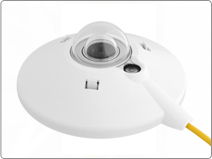Albarubens S.r.l. is a test laboratory, located near Milan in Italy, that specialises in Solar Energy systems. The company name means ‘red sunrise’ in ancient Latin. Albarubens performs testing and certification of PV panels for power plant projects, which are used to help decision making by the project managers. The laboratory is accredited under IEC17025 for all the performance and endurance tests on photovoltaic (PV) solar panels, as described in the standard IEC EN 61215 (crystalline silicon), IEC EN 61646 (thin film) and IEC EN 61730-2 (safety aspects). By the end of 2009, it will also be operating to IEC 62108 (concentrators) and EN12975 (thermal solar panels).
The main performance test carried out by Albarubens is the measurement of the maximum electrical power generated by a PV panel per square metre. This value depends on the module technology, which is the main factor to be considered in the choice of PV systems.
Research and development in this field results in constantly improving performance. The difference in performance of panels from various manufacturers is quite small, so an objective power measurement has to be made with very high precision and low uncertainty to certify the performance. The quality of the measurement depends on the accuracy of the measurement of electrical power output and the solar irradiance available to the panels.
Of course, the electrical power generated by PV depends on a number of factors; the total incoming radiation, its spectrum, the angle of incidence, the module temperature and other parameters. Usually power is measured under Standard Test Conditions of 1000 W/m2 solar radiation at an ambient temperature of 25°C and with Air Mass 1.5. The Air Mass (AM) is the amount of atmosphere that light directly from the sun passes through to reach the ground and this depends largely on the solar elevation. The spectrum of the light is affected by the Air Mass. The Standard Test Conditions are equivalent to a clear sunny day at sea level in mid latitudes with the sun at 45° zenith angle.
Most manufacturers of PV modules carry out performance tests using a ‘solar simulator’ based on a Xenon flash lamp and an electronic load with power meter. The main advantage of testing in artificial conditions is the possibility to work at any time and independently of the weather conditions. Also, the solar simulator can be easily integrated into production line testing.
On the other hand, this also shows problems. The data requires a spectral mismatch correction, the lamp output is not homogeneous on the PV surface, and flash duration is very short (2-10 ms). This very short pulse requires a PV reference cell as the irradiance meter, but these have an uncertain spectral response. All together these problems results in a high uncertainty of the measurement; up to 6% for commercial grade equipment and 2% for very expensive laboratory types.
Since the beginning, Albarubens has chosen to measure the PV power under natural sunlight, which restricts the number of measurement days in a month. However, this is a negligible problem because all the other tests required by the standards take more than 2 months. Moreover, in Italy, there are many sunny days in a two month period even in winter. Under natural sunlight there are no problems with spectral simulation, source stability, duration or homogeneity. Importantly, they can use a high precision pyranometer to measure the solar irradiance.
 Usually Albarubens performs measurements using a Kipp & Zonen CMP 11 pyranometer as the absolute irradiance meter, plus a reference PV module for comparison. The pyranometer calibration is traceable to the World Radiation Centre (WRC) in Davos, Switzerland and the reference modules to inter-laboratory comparisons. The parallel use of two reference sources minimises the total uncertainty. Every test is repeated ten times to calculate the mean value and repeated again in the rare case that the standard deviation is higher then 0.2%. Albarubens regularly obtains a global radiation uncertainty of better than 1.8% (k=2 - 95%).
Usually Albarubens performs measurements using a Kipp & Zonen CMP 11 pyranometer as the absolute irradiance meter, plus a reference PV module for comparison. The pyranometer calibration is traceable to the World Radiation Centre (WRC) in Davos, Switzerland and the reference modules to inter-laboratory comparisons. The parallel use of two reference sources minimises the total uncertainty. Every test is repeated ten times to calculate the mean value and repeated again in the rare case that the standard deviation is higher then 0.2%. Albarubens regularly obtains a global radiation uncertainty of better than 1.8% (k=2 - 95%).
Albarubens is confident that the best way to quantify PV module performance, for certification purposes, is in their real working condition - natural sunlight!
We wish to thank Ing. GiuseppeTerzaghi of Albarubens for contributing this article. For more information please visit www.albarubens.it